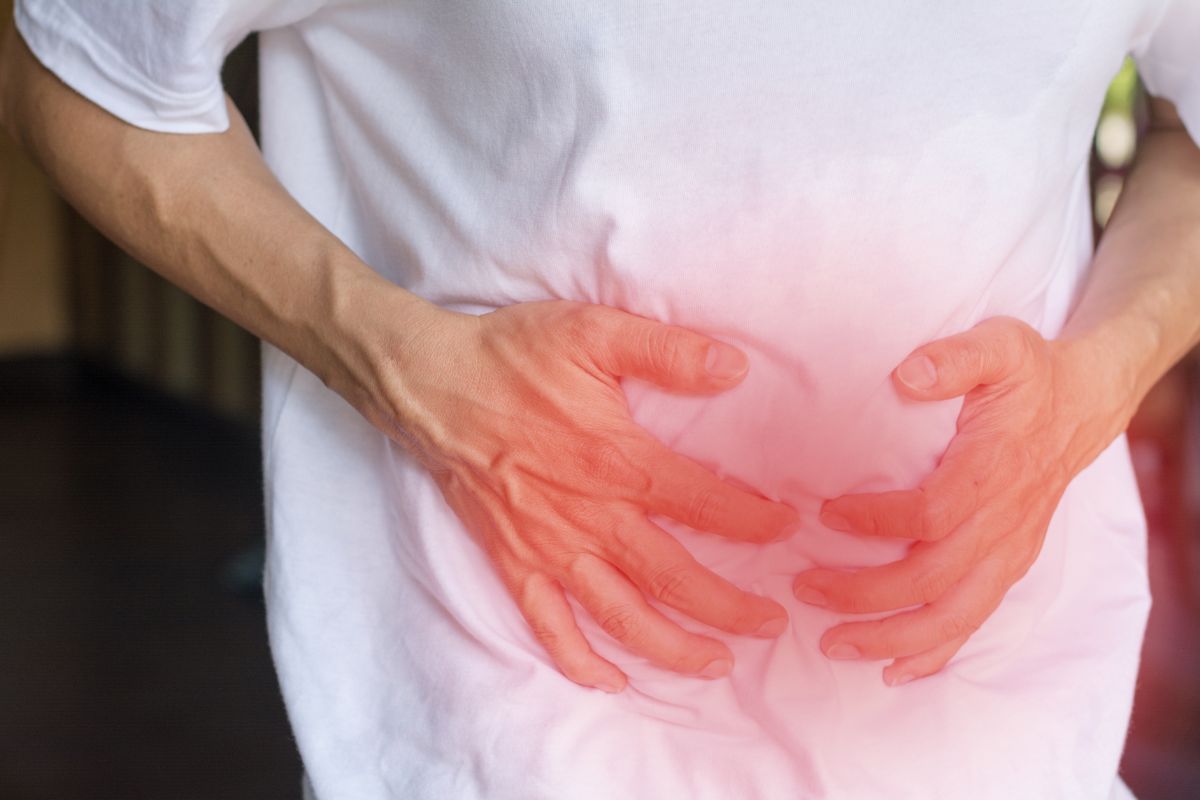Crohn’s is an awful and debilitating disease, it’s a type of inflammatory bowel disease which is chronic so if you have it you’ll sadly have it for the rest of your life.
It’s regarded as a progressive disease that gets worse the longer you have it for, and that means the pain will worsen too.

There are ways to manage the disease and lessen the pain so that you’re not in constant agony, but these methods won’t rid you of the disease, they will just make your quality of life better.
This article will give you a bit more information on Crohn’s disease and also let you know how to manage the pain the best you can.
What Is Crohn’s Disease?
Crohn’s disease is a chronic condition where parts of the digestive system become inflamed.
It can affect any part of the digestive system from the mouth to the anus, but it most commonly will affect the end of the small bowel and the beginning of the colon.
Around 3 million Americans are affected by Crohn’s, and it’s diagnosed most between the ages of 20 and 30, but any age can be affected by the disease.
There’s a few different types of Crohn’s disease, what type you have will be decided by which part of the digestive system is affected.
It’s important to know which you have, as the symptoms and pain can vary.
Ileocolitis
As we mentioned before, this is the most common form of Crohn’s disease, it affects the end of the small intestine and the colon.
The symptoms for Ileocolitis are:
- Cramping or pain in the middle or lower abdomen
- Weight loss
- Diarrhea
Gastroduodenal Crohn’s
This form of Crohn’s causes inflammation in the esophagus, stomach and/or duodenum. It’s not really a common form of Crohn’s disease, only 5% of people who have Crohn’s will have gastroduodenal.
The symptoms include:
- Nausea
- Vomiting
- Weight loss
- Abdominal pain (similar to what you may have from indigestion)
- Fatigue
Jejunoileitis
This type causes inflammation in the jejunum (the upper half of the small intestine), it’s quite uncommon and is diagnosed more in children than adults.
The symptoms can include:
- Cramps after eating
- Mild to intense abdominal pain
- Anemia
- Weight loss
- Fatigue
- Cramps after eating
Ileitis
Ileitis is chronic inflammation of one or more sections of the intestine. In its strictest definition it is inflammation of the lower portion of the small intestine, known as the ileum.
The symptoms can include:
- Chronic or intermittent diarrhea
- Painful abdominal cramps
- Blood in your poop
- Fistulas

Crohn’s Colitis
This form of crohn’s disease will only affect the colon, also known as the large intestine.
The symptoms can include:
- Rectal bleeding
- Skin lesions
- Joint pain
- Disease around the anus (fistulas, ulcers or abscess)
- Diarrhea
Why Is It So Painful?
It’s not really hard to see why people living with Crohn’s are in so much pain, because of the inflammation of the digestive track it can lead to really bad symptoms.
Such as:
- Fatigue
- Diarrhea
- Blood in your poop
- Stomach aches and cramps
We’ve only listed a few but the list goes on. People suffering with Crohn’s can also experience joint pain and arthritis which is one of the most common complications that can affect those with Crohn’s outside of the digestive system.
Fistulas or abscesses can occur on the anus too, which is as painful as it sounds.
It is an abnormal connection between an organ or blood vessel and another structure. If left untreated these can turn into a bacterial infection and then sepsis which can ultimately lead to death, they’re very serious.
How To Manage Crohn’s Disease
Living with Crohn’s is something you’ll have to get used to, it’s upsetting to know that it can’t be cured at the moment but the main thing is to lessen your pain whilst you’re living with it.
Medications can be used to minimize inflammation and stop your body from attacking its own cells.
For mild pain, over the counter medication can be used such as Tylenol or any other non-aspirin pain relievers.
It’s important to not use aspirin or ibuprofen if you suffer from Crohn’s as it can make the symptoms of the disease even worse as the chemicals in these control how much acid your stomach makes to digest food which can cause even more inflammation and irritation.
As your symptoms start to worsen, your doctor may recommend a bowel rest. It’s important to note that not all doctors agree with this, so it is your decision.
A bowel rest consists of a strict diet of liquids only to let the digestive system heal from any inflammation.
This can be dangerous due to malnutrition occuring, so it’s always best to inform your doctor if you want to undertake this method.
Another option you have is to manage your diet. Many people with Crohn’s disease find that cutting dairy products out of their diet helps to reduce abdominal pain and passing gas.
Other foods such as spicy foods, high-fiber fruits, nuts, seeds and caffeine can worsen the symptoms of Crohn’s.
If you experience diarrhea as a part of your struggle with Crohn’s disease it can irritate your skin badly.
Using baby wipes or wipes that are specifically sensitive when wiping the anal area can help fight inflammation and relieve pain from the area.
Final Thoughts
Crohn’s is a severely painful disease that people have to live with for the rest of their life, but medication and lifestyle changes can help battle the pain and inflammation that comes with it.
The disease will get progressively worse, but if you catch it at an early stage then you will negate the effects of the disease as best as you can before they get too severe.
Untreated Crohn’s disease can lead to even more complications of the digestive system occurring, which will ultimately make your quality of life even worse and cause severe pain that may become permanent.
- Understanding Male Reproductive Health: A Complete Guide - February 2, 2025
- Simple Healthy Skin Habits for Radiant Skin - December 6, 2024
- Unlocking the Connection Between Nutrition and Mental Health - December 3, 2024








